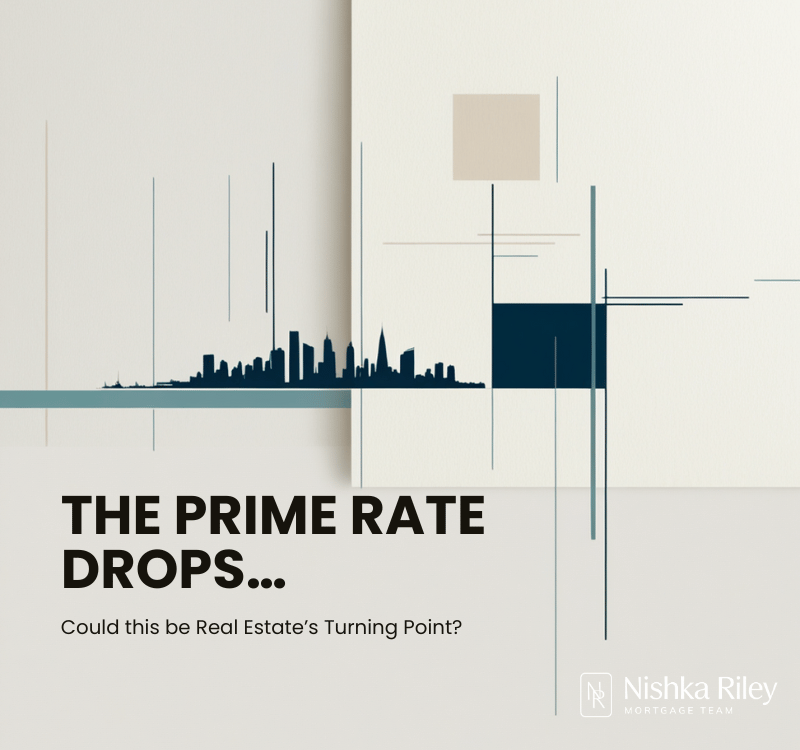
Rate Update – Where Do We Go From Here?
April 13, 2022
Mortgage Rate Update – Tiff Gives Inflation A Big One To The Chin
July 13, 2022The Bank of Canada ( BOC ) governor Tiff Macklem ( Tiff ) surprised the market today with a 0.5% rate increase to the bank’s prime rate. Though the markets had somewhat expected it, there was a sense of hope that “we” might get a 0.25% tap on the brakes instead. To keep us on all the edge of our seats, Tiff finished his announcement with some stern words, saying he is “prepared to act more forcefully if needed.”
…cue scene from a classic B Movie with people running, holding their heads and screaming in utter panic.
So why am I not panicking? Because when you look at what is driving inflation, combined with how it’s measured, you can see that these are temporary items, and as they say, this too shall pass.
Understanding the Consumer Price Index ( CPI )
Here are two key facts about CPI that will hopefully put your mind at ease:
Fact #1 – CPI is measured by comparing last year’s costs to this year’s cost.
If we go back in time June 1st 2021, after having gone through 2020 with people being either locked down, travel restricted and basically not being able to spend money on much of anything other than what they could drive to or get delivered to them, CPI was at an all time low. Measuring from a low to a high point will produce an exponential figure that shows rapid growth. In 2020 the BOC and Fed had mentioned they were open to “reinflation” but now it seems that idea is causing panic in the masses/news feed, and as a result, the central bankers seem to be changing their tune.
Fact #2 – Oil represents over 80% of the CPI figure
Rising oil doesn’t just impact you at the gas pump, it impacts everything you touch. From the food you put in your shopping cart, to the oil used to make your Lulu’s to the gas in the purple van that brings your Amazon stuff to your door, oil plays a part in everything we consume.
This time last year, oil was $70/barrel. In March of 2020 it was at $20 – as of today, the price is $115. The Fed Chairman testified that every $10 increase in the price of a barrel of oil would increase inflation by 0.2%, and a study done by the Dallas Federal Reserve showed that if oil were to rise over $100 it would directly contribute 3% to inflation.
These two main components are what’s driving the rise in inflation. So that leads us to the big question …
When will things get back to normal?
The short answer is when we get the variables that impact the input costs of manufactoring goods under control.
The first problem are the events in the Ukraine. The implications of having Russian oil out of the market is having a huge impact on prices. Once this situation is resolved, as mentioned in my comments above, this could reduce inflation by 3% – just on it’s own.
The second problem is the supply chain. Economics 101 teaches that inflation is caused by too much money chasing too few goods. This is the first time we’ve had too few goods with no extra money. As mentioned in my previous Bank of Canada Update, COVID is wreaking havoc on manufacturing. From China’s zero COVID approach to being used as an excuse for not deliveriing my new washing machine on a sunny Friday afternoon ( true story ). The ability for companies to operate efficiently is going to be hampered until we can all “breath easy” and take comfort in the fact that COVID is more in the rearview mirror than on the horizon.
Both of these items are playing havoc on everyday business. Once businesses can get back to working efficiently and have confidence that the materials need to make their products will arrive on time, and within a predictable price range, they will be able to take the “inflation premium” out of their pricing. This should lead to price reductions which will reduce inflation.
The Bottom Line – How does this impact my mortgage?
The 5 year fixed mortgage is being priced based on fear. Bankers are nervous with Governor Tiff shouting from the rooftop with a pitchfork in hand, ready to battle inflation. If you look at the 5 year Bank of Canada bond yield from back in 2018 ( when Trump was stoking inflation with tax cuts and nationalistic business practices ), it was roughly 2.4%. Today it’s at 2.85%. Though it’s only 0.45% higher, the 5 year fixed mortgage rate is 1% higher than the 2018 peak. Why? Bankers are pricing in the future – now. If you read my previous update you’ll understand why rising rates keep bankers up at night, and how they have to price mortgages to keep from losing their shirts.
So what should you be doing with your mortgage?
If you have a maturity in the coming months, consider either a variable rate mortgage or a shorter term. Going with a shorter term lets you avoid the inflation premium that bankers are imposing on longer mortgage terms. And though a variable rate may rise one or two more times over the next year, it will be cheaper than the current 5 year fixed rate. Keep in mind, that what goes up must come down, so it will decrease when the inflationary tide subsides, which is expected to happen in late 2023 / early 2024.
Though I don’t have a crystal ball, I feel that a big part of the inflation concern is due to sensationalism. And since we are comparing things to the 80s, I’m going to finish off by saying – “don’t believe the hype”
I hope this update helps you sleep tonight. I know that writing it was therapeutic for me!

The next Bank of Canada meeting is July 13th, 2022
Did you Like this post? Then you’ll Like my Facebook Page. It’s filled with current news on what’s going on in the world of real estate.




